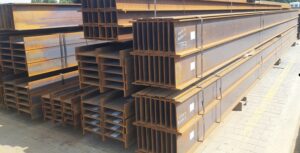What is the different between UB and UC
UB and UC are terms used in the construction industry to refer to two different types of structural beams. These beams are essential components in building design, providing support and stability to a variety of structures. Understanding the differences between UB and UC is important for architects, engineers, contractors, and building owners, as the choice of beam type can have a significant impact on the safety and performance of a building.

Summery
- UB
- UC
- Universal Beam
- Universal Column
- Construction industry
- Building design
- Structural beams
- Horizontal loads
- Vertical loads
- Steel
- Concrete
- Rectangular cross-section
- Flange
- Web
- Load capacity
- Building safety
- Structural failure
UB
stands for Universal Beam, and it is a wide and flat structural element that is designed to support heavy loads in a horizontal orientation. Universal Beams are commonly used in floor joists, roof rafters, and other horizontal elements of a building. These beams are typically made from steel or concrete, and their rectangular cross-section allows them to support large loads without bending or twisting.
One of the key characteristics of Universal Beams is their size. They are typically much wider than they are tall, which allows them to support large loads without excessive bending. This makes them ideal for supporting heavy loads that span a large distance, such as floor joists in a large building. The flange of the beam, which is the wider part, provides the strength and stability needed to support these loads, while the web, or the thinner part of the beam, provides stability and prevents twisting.
UC
on the other hand, stands for Universal Column, and it is a tall and slender structural element that is designed to support heavy loads in a vertical orientation. Universal Columns are commonly used in walls, bridges, and other vertical elements of a building. Like Universal Beams, Universal Columns are typically made from steel or concrete, and their rectangular cross-section allows them to support large loads without bending or twisting.
The key difference between Universal Columns and Universal Beams is their size and shape. Universal Columns are much taller than they are wide, which makes them ideal for supporting heavy loads that are vertically oriented. This is because their height provides additional stability and resistance to bending, which is important for resisting the forces of gravity and other vertical loads. The flange of the column provides the strength needed to support these loads, while the web provides stability and prevents twisting.
It is important to choose the right type of beam for each application in building design. Universal Beams are best suited for horizontal loads, such as those imposed by floor joists or roof rafters, while Universal Columns are best suited for vertical loads, such as those imposed by walls or bridges. Using the wrong type of beam can result in structural failure and put people and property at risk.
Another important factor to consider when choosing between UB and UC is the load capacity of the beam. The load capacity of a beam depends on several factors, including its size, material, and shape. Universal Beams are typically wider than Universal Columns, which makes them capable of supporting more load. However, Universal Columns are taller than Universal Beams, which provides them with additional stability and resistance to bending. This makes Universal Columns well suited for supporting heavy loads in high buildings, where the height of the building and the size of the loads increase.
In addition to the size and shape of the beams, the choice of material is also important. Steel and concrete are the most commonly used materials for Universal Beams and Universal Columns, and each has its own advantages and disadvantages. Steel is a strong and lightweight material that is easy to fabricate and install, but it is subject to corrosion and may require additional protection, such as painting or galvanizing, to prevent rust. Concrete is a heavy and durable material that is resistant to fire and insects, but it is difficult to work with and requires skilled labor to install. The choice of material will depend on the specific needs of each building
Comments are closed.